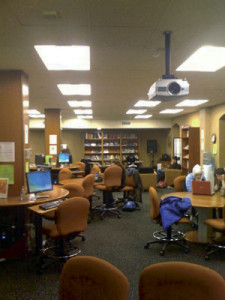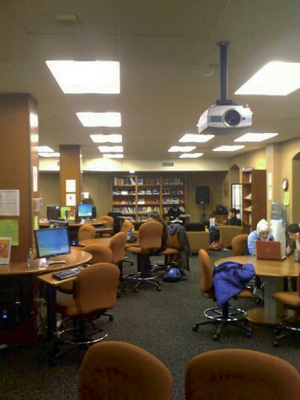
Most Stanford students are familiar with the Hume Writing Center (HWC). As a hotspot for freshmen struggling with Introduction to the Humanities (IHUM) assignments as well as graduate students plugging away at their dissertations, the Center seems to be going strong as it celebrates the tenth anniversary of its opening.
However, many students would be surprised to discover that the Center is only 10 years old. Andrea Lunsford, former HWC director, joined the Stanford faculty in 2000 with instruction to “think about undergraduate writing.” She was surprised, but pleased, when she discovered that Stanford did not already have a writing center.
“If there wasn’t one already in existence, we could make it exactly how we wanted,” Lunsford said.
According to Lunsford, upon the HWC’s founding in 2001, the Hume Writing Center−originally the Stanford Writing Center−was the most cutting-edge writing center of its kind.
“It was designed to address any issue of writing−from the very first thinking about writing to the last dotted ‘i’ for everybody on campus,” Lunsford said. “What made it unique at that time was its focus on celebrating writing.”
This outlook on writing meant that the Center was tasked with being more than just an academic resource−it also works to promote writing outside of academia.
The Center hosts events during Parents’ and Admit Weekends to highlight student writing, co-sponsors art of writing workshops with the Creative Writing Program and hosts regular performances by spoken word artists.
“We’re committed to celebrating writing in all its forms, from traditional writing to new media writing and doing all we can to help Stanford’s culture of writing thrive,” said Sohui Lee, associate director of the Center.
The HWC includes consultants of many different kinds. Undergraduate students, graduate students and Program in Writing and Rhetoric (PWR) lecturers are all available for consultations to help students with their work.
“We are unique in that we offer students opportunities to work with several kinds of tutors with writing expertise and training,” Lee said.
Patricia Ho ’14 has had experience with various types of tutors.
“I used to do drop-in appointments and I worked with mostly peer tutors,” Ho said. “Now I sign up for appointments, so it tends to be more graduate students and PWR instructors. It’s nice to get the different perspectives.”
“People can come in and sign in and I’ll work with anyone who shows up to go over essays or applications or anything they’ve written,” said Elena Ayala-Hurtado ’14, a drop-in peer tutor.
The Center is not just an undergraduate resource. It is available to anyone at Stanford looking for help or consultation relating to his or her writing. Ayala-Hurtado said she works mostly with undergraduates, including freshmen in IHUM and PWR, while Donna Hunter, an HWC writing consultant, explained that the Center sees a lot of graduate students as a result of outreach efforts.
“We’ve done a lot of summer stuff working with graduate students,” Hunter said. “It’s called Dissertation Boot Camp… we’ve gotten a lot more graduate students for that reason.”
Regardless of who uses it, the Center is a resource provided for free to all students. According to its website, the Center offers around 6,000 consultations each year.
“It’s a completely free service available to everyone on campus at almost any time,” Lunsford said. “Students have support for writing right at their fingertips.”
Hunter explained that she likes to think of it as “talk therapy.” The consultants are not just there to fix a student’s essay, but to help them talk through their own ideas.
“Oftentimes by articulating what you’re thinking about, you get a lot clearer,” Hunter said.
Ho echoed this idea, based on her experience working with tutors.
“It’s helpful just to talk out loud and think about what I’m trying to make into an argument,” Ho said.
According to Lee, the Center’s popularity rises each year as the number of tutoring sessions increases. Many students return to the Center regularly.
“We believe that our writing programs are important to the University and to students because they increase students’ chances for academic success in their majors,” Lee said. “Good writing is good thinking.”
